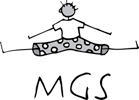Key Takeaways
- Extracorporeal shockwave therapy uses acoustic waves to stimulate the body’s natural healing process, improving blood flow and promoting the repair of injured tissues.
- Research suggests that shockwave therapy effectively reduces pain from chronic tendon and soft tissue injuries such as plantar fasciitis and rotator cuff tendinopathy.
- The treatment triggers the release of growth factors that help rebuild damaged cells and tissues, promoting faster healing and long-term recovery.
- Radial shockwave therapy offers a noninvasive treatment option for musculoskeletal injuries, ideal for patients seeking conservative treatment methods without surgery.
- Most patients report mild discomfort during the session and experience steady symptom improvement within several weeks of treatment.
What Is Shockwave Therapy?
Shockwave therapy, also known as extracorporeal shockwave therapy (ESWT), is a modern physical medicine technique used by physiotherapists to treat chronic tendon and soft tissue injuries. It works by delivering targeted sound waves or acoustic waves to an injured area, stimulating the body’s natural healing process. These waves initiate the repair of damaged tissues by enhancing blood supply, facilitating the release of growth factors, and promoting cell regeneration.
Developed initially to break down kidney stones, ESWT has since become a valuable tool in sports medicine and physical therapy. Today, it plays a key role in treating long-standing pain that has not responded well to other therapies, particularly for clients seeking a noninvasive treatment option.
How Shockwave Therapy Works
During treatment, a physiotherapist applies ultrasound gel to the treatment area and uses a shockwave device with a handheld probe to deliver precise pressure waves into the targeted tissue. These waves generate controlled microtrauma at the cellular level, prompting an increase in blood flow, tissue regeneration, and the release of growth factors responsible for repair.
Research suggests that shockwave therapy can interrupt pain pathways by calming overactive nerve endings, reducing inflammation, and promoting the breakdown of calcified tissue. In essence, the treatment helps the body heal itself more efficiently. It is safe, well-tolerated, and can be customised depending on the location and severity of your injury.
Many patients report mild discomfort during their first session, which typically lasts about 10 to 15 minutes. The intensity of the shock wave pulses can be adjusted for comfort, ensuring that treatment remains effective without causing undue pain.
If you have tried rest, stretching, or manual therapy without success, a session of radial shockwave therapy at MGS may help restart your healing journey.
Common Conditions Treated with Shockwave Therapy
Shockwave therapy is often used for chronic tendon or soft tissue injuries that develop from repetitive strain or overuse. The most common conditions include:
- Plantar fasciitis (heel pain)
- Hamstring tendinopathy
- Rotator cuff injuries
- Achilles tendinopathy
- Tennis elbow and golfer’s elbow
- Patellar tendinitis (“jumper’s knee”)
- Calcific tendonitis of the shoulder
- Soft tissue and musculoskeletal injuries from sport or physical activity
Additionally, some clinical studies suggest that ESWT may benefit certain neurological disorders, such as multiple sclerosis, by reducing spasticity in overactive muscles.
Whether you are an athlete dealing with a sports injury or someone facing chronic pain from work, a customised treatment plan at MGS Physiotherapy can help reduce pain and improve movement.
What Happens During the Procedure?
Each session begins with your physio identifying the injured tissues and applying ultrasound gel to help transmit the sound waves effectively. The handheld device is then moved across the treatment area, delivering pulses that travel deep into the tissue.
The pressure waves trigger a chain of healing events that improve blood flow, form new vessels, and enhance oxygen delivery to the injured tendon. Over time, this process encourages natural repair, improving function and reducing pain.
Most patients resume normal activities almost immediately. The healing process continues for several weeks as the body regenerates new healthy tissue. While some notice results after their first treatment, others benefit from a short program of three to six sessions, depending on the severity of their condition.
Why Choose Shockwave Therapy at MGS Physiotherapy?
At MGS Physiotherapy, our sports medicine specialists and physiotherapists use shockwave therapy as part of a holistic treatment plan. By combining radial shock wave therapy with targeted exercise programs, we help patients achieve lasting improvements in mobility, strength, and confidence.
Our practice focuses on long-term outcomes rather than quick fixes, so each treatment is personalised for your specific injury, health goals, and physical activity level. We treat everyone from competitive athletes to busy parents recovering from soft tissue or musculoskeletal injuries.
MGS Physiotherapy operates across Sydney’s Northern Beaches, with clinics in Manly, Mona Vale, and North Curl Curl, providing easy access for locals seeking expert care without the need to travel far.
Every patient is treated with care, compassion, and a commitment to evidence-based practice. That is why many patients in the community trust MGS for their shockwave treatment needs.
Want to see what kind of improvement shockwave therapy can bring? Book your appointment with MGS Physiotherapy and start your recovery journey today.
The Science Behind the Effectiveness
The effectiveness of extracorporeal shock wave therapy lies in its biological response. When the pressure waves reach damaged tissue, they trigger increased blood flow and promote an inflammatory response that signals the body to begin repair. This natural reaction enhances the production of collagen, stabilises the injured site, and speeds up overall healing.
Patients often ask whether shockwave therapy is safe. Multiple clinical studies confirm that it is a noninvasive treatment with few risks and high success rates in treating sports injuries and chronic tendon pain.
For most patients, the benefits include reduced pain, faster healing, and improved function, especially when paired with exercise or manual therapy.
